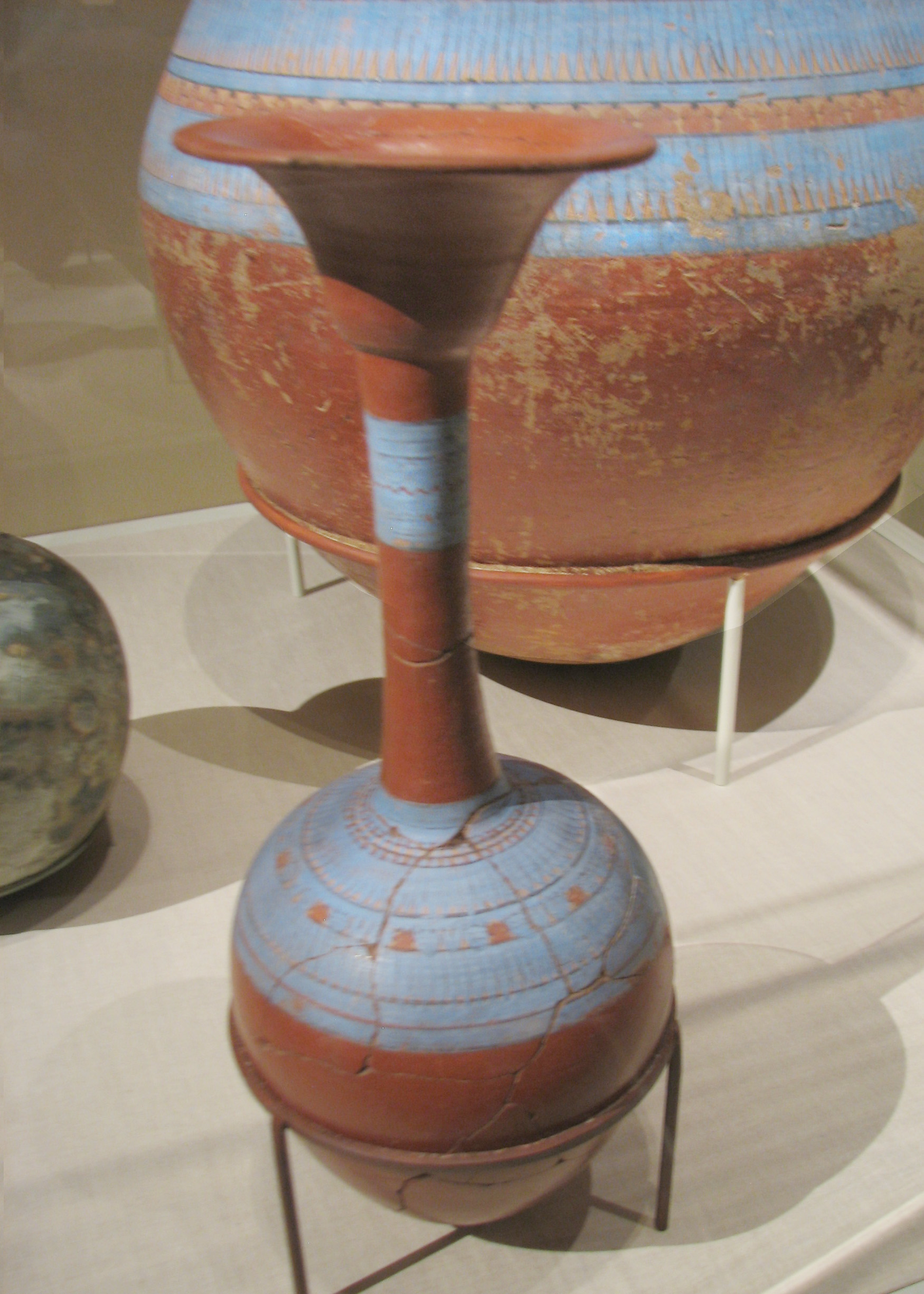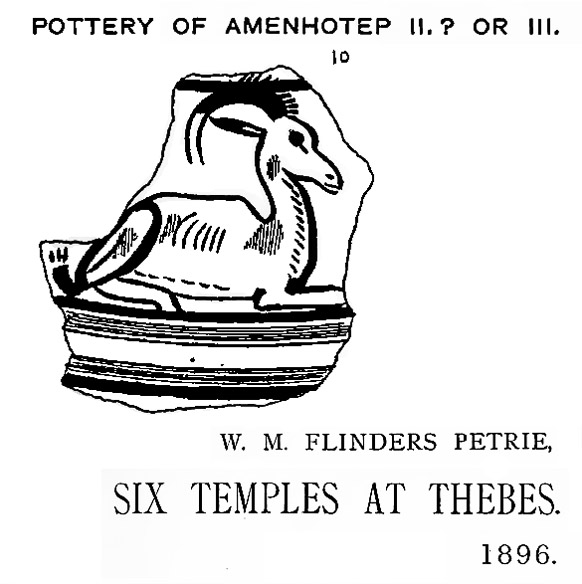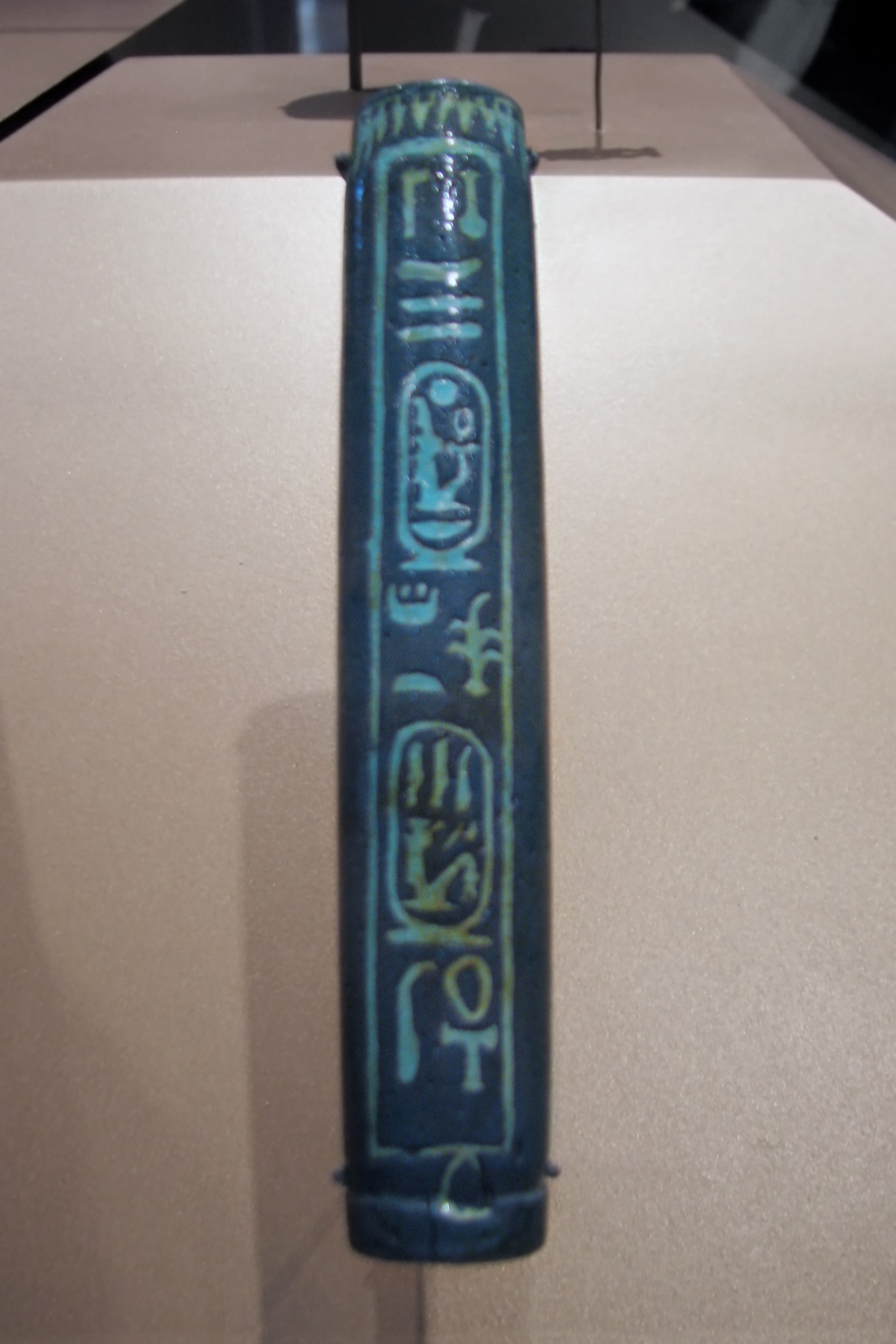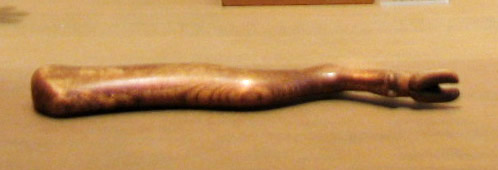
(Do Click to see larger)
I don't have info for the two pieces at far left, but I do have, in order left to right:
Tube for Eye Paint (Kohl) in the Shape of a Papyrus Column
Dynasty 18, reigns of Thutmose IV to Amenhotep III (ca. 1400-1352 BCE)
Dark blue glass with dragged patterns, lines and edging in green and yellow.
(MMA 26.7.1183)
Votive Menit Counterweight with Images of the Goddess Hathor and the Sacred Cow in a Papyrus Boat
Bronze, Dynasty 18, reign of Amenhotep III (ca.1390-1352 BCE)
Cupreous alloy H. 16 cm (6 5/16 in); w. 5 cm (1 15/16 in)
Rogers Fund, 1951 (51.157.2)
Small Pitcher with an Ibex Head and Neck as an Handle
Bronze, Dynasty 18, probably reign of Amenhotep III (ca.1390-1352 BCE)
Purchase, Edward S. Harkness Gift, 1926 (26.7.838)
Egyptian alabaster jug
Dynasty 18, reigns of Thutmose IV to Amenhotep III (ca. 1400-1352 BCE)
Rogers Fund, 1944 (44.4.77)
Figure of an Ibex, perhaps from a Perfume Flask
Dynasty 18, reign of Amenhotep III (ca.1390-1352 BCE)
Mottled, semitranslucent quartz; two vertical holes in bottom, two horizontal holes in front and rear
Purchase, Vaughn Foundation Gift, by exchange, 1980 (1980.2)
I captured this in 2008, and noted I'd missed something interesting at far right...
So in 2009 I went back and got it:
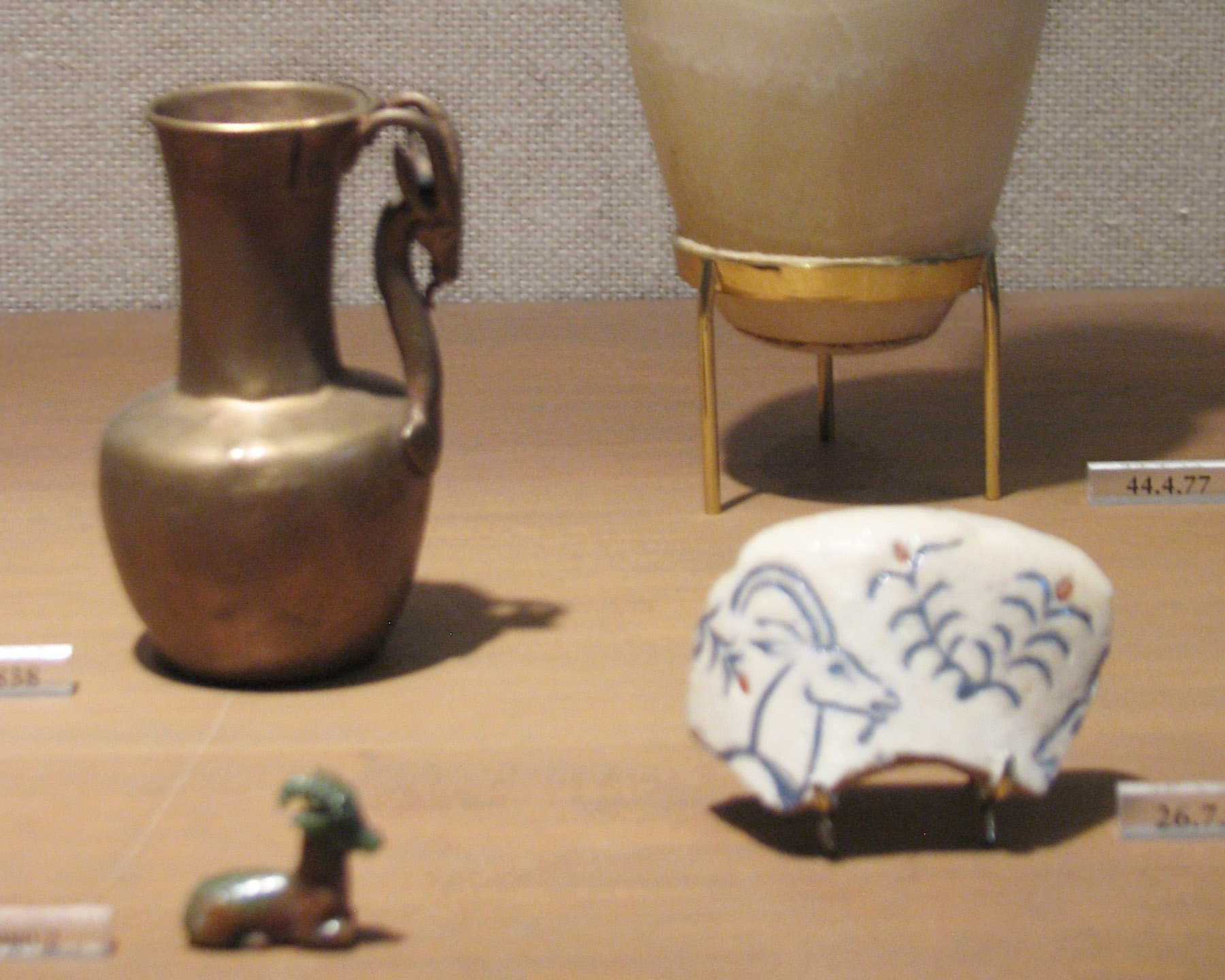
Fragment of a Vase Decorated with an Ibex among Plants
Faience, Dynasty 18, reign of Amenhotep III (ca.1390-1352 BCE)
From the king's palace at Malqatta
Purchase, Edward S. Harkness Gift, 1926 (26.7.954)
